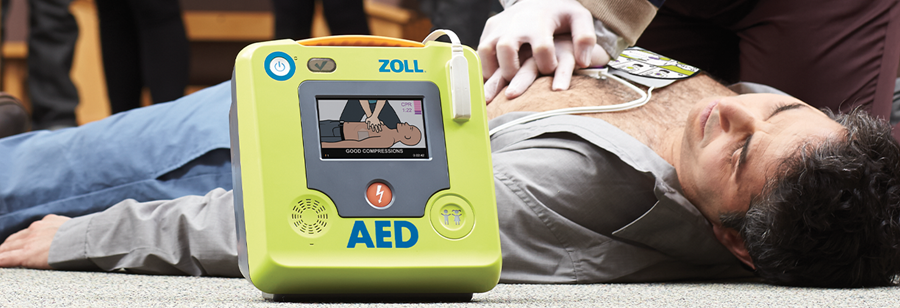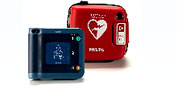
AED at Home
Is your family prepared for a sudden cardiac arrest emergency?
The Facts About Sudden Cardiac Arrest

According to the Heart and Stroke Foundation of Canada, 35,000-40,000 Canadians die from sudden cardiac arrest (SCA) every year.1
Notably, 50% of the sudden deaths in men, and 64% in women, occur in people with no previously recognized symptoms of heart disease. SCA can also result from other direct causes, such as drowning, electrocution, choking and trauma.1
Notably, 50% of the sudden deaths in men, and 64% in women, occur in people with no previously recognized symptoms of heart disease. SCA can also result from other direct causes, such as drowning, electrocution, choking and trauma.1
Nearly 80% of all SCAs occur at home. Today, fewer than 5% survive.1
Defibrillation: The Only Effective Treatment for Sudden Cardiac Arrest
When sudden cardiac arrest strikes, the electrical system of the heart short circuits, causing the heart to quiver rather than pump in a normal rhythm. It typically results in an abnormal rhythm called ventricular fibrillation. Shocking the heart into a normal rhythm is called defibrillation, and is the only effective way to treat VF. Cardiopulmonary resuscitation (CPR) can buy time for someone in cardiac arrest, but alone it will not save a life.
The Chain of Survival
The "Chain of Survival" is recommended for responding to sudden cardiac arrest. Early defibrillation is widely regarded as the single, most important step in the Chain of Survival.
Within 5 Minutes
For the best chance of survival, a shock should be delivered within 5 minutes. While a defibrillator will not save every SCA victim, many more lives can be saved. For every minute that goes by without defibrillation, a victim's chance of survival decreases by 7-10%. And after 10-12 minutes, survival is highly unlikely.1
Emergency Medical Services (EMS) personnel are the designated responders for medical emergencies, such as SCA. And they arrive ready with both equipment and experience. The reality is that most cardiac arrests occur in the home and most people in Canada live in places where it takes at least 5 minutes for emergency help to arrive.1
Add to those 5 minutes:
- The time that may have elapsed between a person going into cardiac arrest and someone recognizing the symptoms,
- The time to call for help,
- The time for emergency responders to arrive and assess the situation,
- The time to deliver a shock with a defibrillator.
With such potential delays, it is increasingly clear why less than 5% of victims survive.1
What is a home defibrillator?
While you may not be intimately familiar with defibrillators, you've probably seen the defibrillator scenario played out many times on TV medical dramas. In a hospital emergency room, the TV doctor yells, "CLEAR", places paddles on the patient's bare chest and delivers a shock. Unlike the TV medical dramas, where there are doctors and equipment ready to respond, SCA often strikes without warning.
To give the victim the best chance of survival, you need to be prepared. Philips HeartStart Home Defibrillator is designed for use in the home by people with no medical training who want to be able to help save the life of an SCA victim. It is the first of a new generation of defibrillators designed specifically for home use.
What is a home defibrillator?
The fact is, nearly 80% of all sudden cardiac arrests occur at home. For the majority of victims, SCA strikes without warning, as they have no previously recognized symptoms of heart disease. Fewer than 5% of victims survive largely because a defibrillator does not arrive in time.1
Consider the other types of emergencies for which you already prepare:
- You buy life insurance and long-term disability insurance.
- You install smoke detectors and hang fire extinguishers.
- You install security systems.


